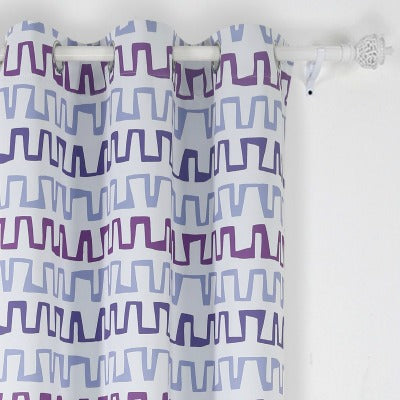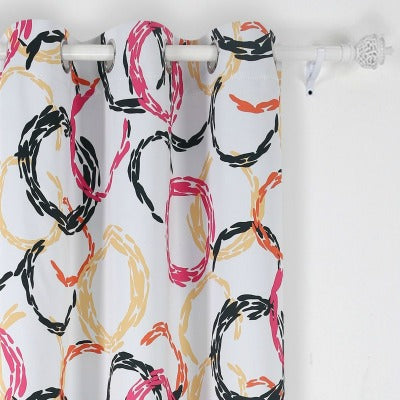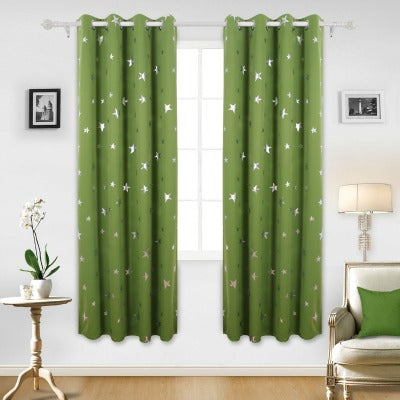Can Thermal Curtains Really Keep You Warm and Save Power?
Curtains are used to dress up a window, provide privacy and complement the décor of a room. Curtains with insulating values do more. Thermal curtains provide a barrier between the outside elements and the indoors. During summer, they block solar gain and reduce the amount of heat that penetrates windows. During the winter, they act as an insulating barrier between cold outside air and warm inside air.
Depending on their material, thickness, color and the way they are hung, insulated curtains can reduce energy loss through windows by up to 25 percent. Some types also block light, and some block noise as well. In this article, we take an in-depth look at energy-efficient curtains.
Insulating Values of Energy-Efficient Curtains

Heating and cooling account for almost half of the amount an average household spends on utilities each year. Using insulated window treatments to jazz up your room and lower your utility bills provides a double value—adding to the aesthetics of your living space and saving money.
Heat enters and leaves a building by several methods. Windows account for approximately 30 percent of the heat that enters a building during the hot summer months. In the summer, radiant heat from the sun penetrates windows and heats the interior. In the winter, heat is transferred from the warmer indoors to the outside through several processes, including convection and conduction.
Insulating properties of a material are expressed as R-values. The higher the number, the more effectively it blocks the transfer of heat. Conventional curtains have an R-value of approximately R-1. Curtains with insulated linings can have R-values as high as R-6. Using insulating window treatments can save as much as 7 percent on utility bills each year.
Thermal window treatments not only reduce heat loss and solar gain. In the winter, drafts make a room feel colder. The response is to turn up the heat. Insulating curtains create a dead-air space that keeps cold air from infiltrating a room. When properly installed, they reduce drafts, which makes the living space more comfortable. You may be able to set back the temperature of the furnace or air conditioner, saving both fuel and money.
Using conventional drapes and curtains made of heavy material reduces heat loss through windows. Closing curtains at night can reduce heat loss by up to 17 percent. According to the U.S. Department of Energy, using curtains with thermal lining can reduce heat loss by up to 25 percent. Using curtains with white plastic backings can reduce heat gain by up to 33 percent.
One of the added benefits of using thermal window coverings is that they protect your indoor furnishings from sunlight. By controlling how much sun comes into a room, these light-blocking materials keep fabrics and carpets from fading. Fragile fabrics that deteriorate in sunlight may last longer. Adding lining to draperies increases the life expectancy of the drapery fabric and furnishings.
Types of Thermal Curtains

Energy-efficient curtains are made in several layers that help insulate windows from sound and heat transfer. Many also have room-darkening properties. The outermost layer, which faces into the room, is a decorative fabric that can complement a room's décor. The middle layer can be any material that slows or prevents heat exchange, such as foam, heavy polyester or cotton flannel. Some types have a special backing that reflects light. Others are made with a fabric lining that covers the inner thermal layer. A vapor barrier is included to keep the fabric from absorbing moisture that builds up between the window and the room.
Ready-made insulating curtains are available in a wide range of decorative styles and fabrics. Solid colors, geometric patterns, floral patterns and textured weaves are available as Roman shades, eyelet curtains, valances and formal draperies. They are also available with rod pocket mountings and in a variety of pleated styles. Heavier materials and closely woven fabrics provide more insulating value. Velvet, faux suede, silk, jacquard and chenille are some heavier materials that are used for a number of thermal curtain styles. Lighter colors are recommended for linings and backings so that radiant heat is reflected back to the outside.
Energy-efficient curtains can also be custom-ordered. This can be more expensive but allows greater flexibility in the type of insulating material and in the type and design of drapery fabric. Custom-ordered thermal window coverings can be made to fit oddly-sized windows.
How to Hang Thermal Draperies

Layering window curtains can take advantage of warm sunlight during daylight hours and keep heat in during the night. Use sheers closer to the window, and hang insulated curtains toward the inside of the room.Sheers are lightweight, translucent curtains that allow natural light to filter through and provide privacy while also adding a decorative element to a room.Multiple layers provide more insulation against heat exchange. On sunny days during colder months, open the heavier curtains to gain solar heat. During the summer, close them to block solar heat.
Ready-made thermal draperies are available in a number of widths and lengths. Wide widths are made by many manufacturers. You can also use multiple panels across a wide window for fullness. For a rich look, calculate between 1 ½ to 3 times the width of the window.
Curtain lengths can be adjusted to complement your decorative style. To optimize the thermal properties, place the top of the curtain several inches above the window. The bottom can rest on the sill or extend down the wall to the floor. Some people like the "puddling" effect of draperies resting on the floor. Others prefer a more formal look with the bottom of the curtain one inch above the floor. Adding a cornice at the top enhances both the look and the heat-blocking properties by reducing airflow around the window.
When fitting thermal draperies, make sure that they are snug against the window frame. Magnetic tape or Velcro can be used to attach the curtain to the wall. If you have baseboard heat, be sure to keep the bottoms of the curtains above the register.
How to Maintain Insulated Curtains
Try to open the curtains regularly so that any moisture accumulated can dissipate. If moisture escapes the vapor barrier and builds up in the fabric, mildew can grow. This is particularly important if you live in a humid climate or in an area that gets a lot of precipitation.
To clean curtains, make sure to read the manufacturer's directions. Different types of materials require different cleaning techniques. Regular vacuuming keeps any curtain from becoming discolored from dust and other airborne particles. Both sides can be vacuumed using a soft brush attachment.
Foam-backed curtains can be wiped down with a damp cloth or upholstery cleaner. They can also be removed from the rods and washed by hand. Be sure to remove all hooks and other hardware. Test an area first to make sure that the colors will not be affected by laundry soap. Foam-backed curtains should not be machine-washed. The agitation of the washer may dislodge the backing. Instead, launder in cold water in a large tub. Avoid using bleach, which can damage the backing. Wash by gently squeezing. Do not soak. Rinse in cool water. Avoid twisting or wringing the panels.
Hang foam-backed curtains to dry using the curtain hooks. Do not fold them over the line. Hang so that the backings do not touch one another. Foam-backed curtains can be pressed on the fabric side with a cool iron.
Some thermal window coverings can be machine-washed. Wash in cold water and on the delicate cycle. Light fabrics such as cotton and polyester blends can be dried in the clothes dryer on low heat or air to prevent shrinkage. The best is to hang them to air-dry in the shade. Most can be pressed with a cool iron. If in doubt, test a small area first.
Heavy draperies may require dry cleaning. Be sure to take them to a dry cleaner that specializes in curtain cleaning. Inform the service about the type of fabric. Some fabrics require a non-immersion process to avoid damaging decorations or color. If the curtains are lined, the lining and front fabric may be different. Some linings shrink after treatment. Discuss options with your dry cleaner.
Energy-saving window treatments can improve the comfort of your indoor environment. The thermal values of the fabric and linings help keep cool air out during winter and in during summer. Cutting down on drafts makes you feel warmer in winter. Many people are able to lower their thermostats by adjusting their curtains throughout the day to capture the warmth of the sun. Closing them at night creates a warm, cozy atmosphere and keeps the cold nighttime air out.
Thermal curtains need not be boring, ho-hum, plastic-backed window treatments. The range of patterns, fabrics and weaves provide a number of options to complement your décor. They make your windows a focal point of the room as they cut down on your fuel bills.
Browse By Color









